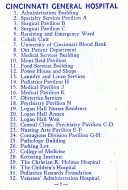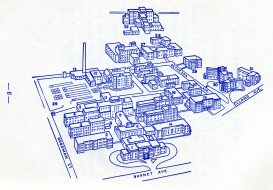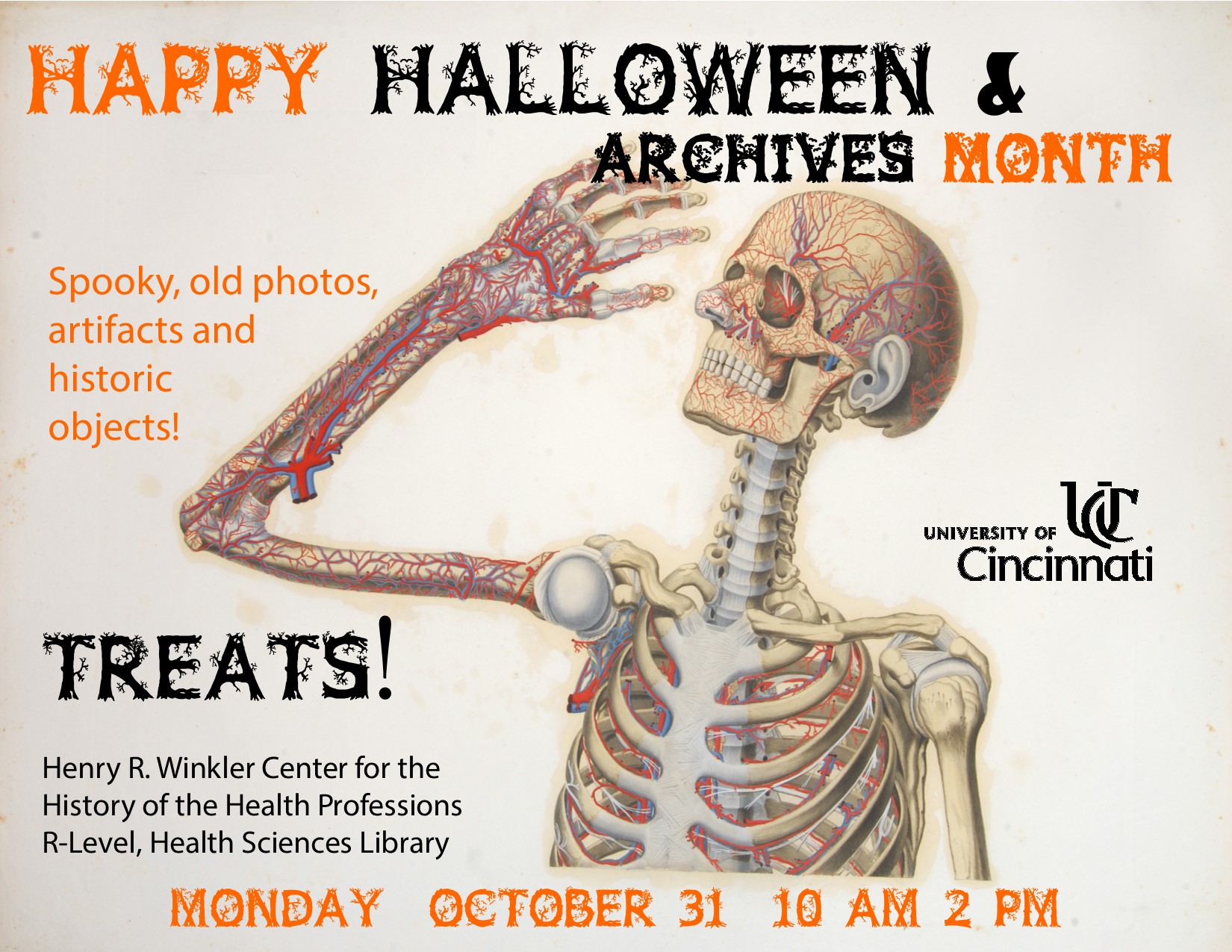Below is the Save the Date for the Winkler Center’s Cecil Striker Annual Lecture. The lecture is titled African American Physicians in Cincinnati: Past, Present and Future and will focus on the contributions, challenges and professional achievements of African American health care professionals from the University of Cincinnati as well as the Cincinnati region. This year instead of one lecturer we will feature a panel of four individuals who are retired or current African American physicians. The Henry R. Winkler Center Advisory Board Members, as well as faculty and staff of the Winkler Center are very excited about this upcoming event. 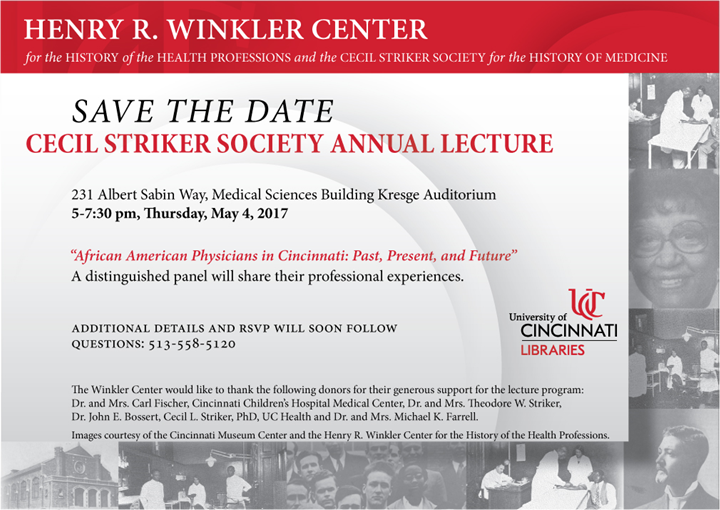
Category Archives: Winkler Center
Check Out the Latest Issue of Source
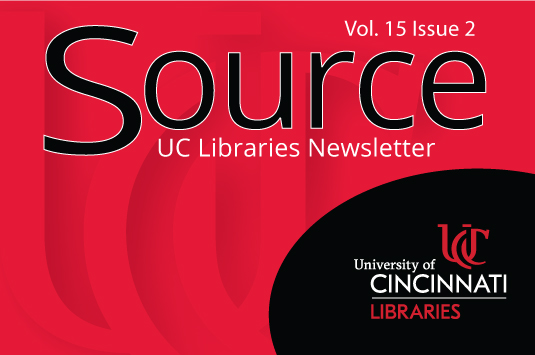
Read Source, the online newsletter, to learn more about the news, events, people and happenings in UC Libraries.
This latest issue of Source includes interviews with Dean Xuemao Wang about creating a Master Plan for library spaces as well as with May Chang about her role in the newly created position of library chief technology officer. Other articles include the announcement of a gift from the John Hauck Foundation for the digitization of Dr. Albert B. Sabin’s lab notebooks, the installation of two new exhibits of World War I illustrated sheet music, a listing of Spring events in UC Libraries, an update on recent staff accomplishments and a donor spotlight of Marjorie Motch. Read these articles and more.
Source is available on the web at http://libapps.libraries.uc.edu/source/ and via e-mail. To receive Source via e-mail, contact melissa.norris@uc.edu to be added to the mailing list.
Dean’s Corner: Remembering Dr. Henry Heimlich
I first met Dr. Henry Heimlich, or “Hank”, shortly after I arrived at the University of Cincinnati. To my surprise, he had expressed a strong interest in meeting me, so I eagerly invited him to join me for dinner at my home, along with Associate Dean Emeritus Steve Marine, the libraries’ Director of Development Christa Bernardo and our respective spouses. It was then that I learned of his time as a surgeon with the US Naval Group in World War II. Hank had been stationed in China, and his first stop was my hometown of Chongqing.
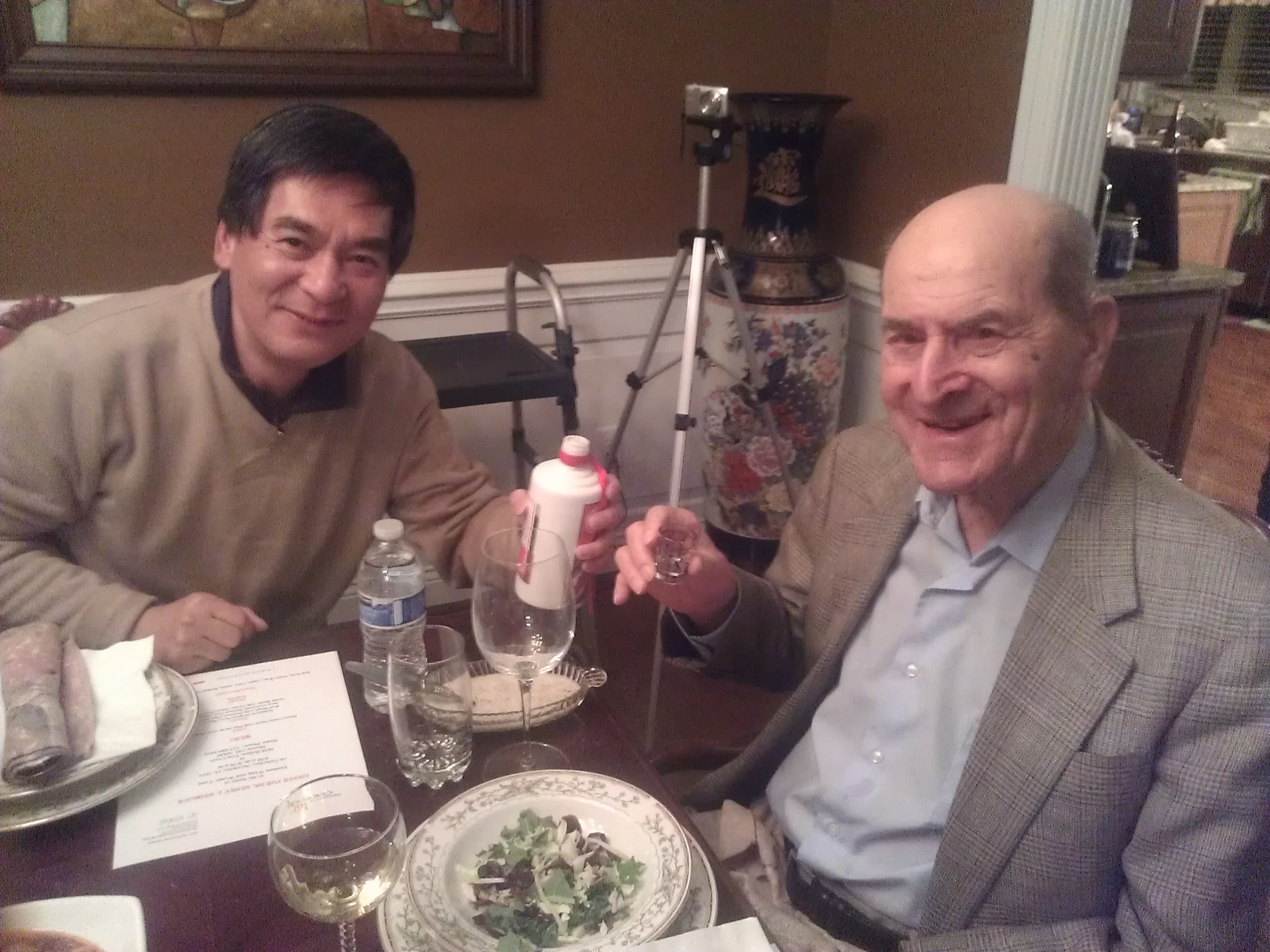
Sharing dinner at my home with Hank Heimlich
Smoking Permitted and No Tipping Allowed!?! Hospital Information for Overnight Patients, 1958
The following post was written by Winkler Center assistant archivist, Nina Herzog. All images courtesy of the Henry R. Winkler Center for the History of the Health Professions
Without a doubt, checking into and staying at hospitals is a lot different today than it was over a half century ago. Computerized check-ins, televisions in rooms and bans on smoking, etc. have all improved the patient experience. The images below were taken from an informational booklet given to patients at the Cincinnati General Hospital (CGH) in 1958.
The instructive pamphlet titled, “Well Here I Am,” provides the incoming patient with information on subjects ranging from check in, dining hours, and visitor information to hospital maps, directions, and much more.
The Passing of Henry Heimlich (1920-2016)
Gallery

This gallery contains 7 photos.
The Winkler Center was saddened over the weekend to learn of the passing of Dr. Henry J. Heimlich. In lieu of writing another obituary or quick biography like the ones that can be read here at the Cincinnati Enquirer or … Continue reading
But what about Robert Kehoe?
Recently, Smithsonian.com published a brief article on the history of leaded

Dr. Robert Kehoe, Kettering Laboratory, UC, date unknown
gas. The article, seen here, http://www.smithsonianmag.com/smart-news/leaded-gas-poison-invented-180961368/, is informative though by no means exhaustive. The story begins in 1920, 55 miles up I-75, in Dayton, Ohio, at the General Motors Research Corporation. An engineer there, Thomas Midgely, and his boss, Charles F. Kettering, had developed an anti-engine knock additive called TEL or tetraethyllead.
At the time, “engine knock,” which was due to a malfunction between the fuel, air, and ignition explosion in a car’s cylinder, was at best a mild annoyance causing a light knocking sound and at worst a problem capable of destroying an automobile engine. Midgely’s solution was to add TEL to gasoline which would raise the combustability, or octane, of an engine lessening its chances of malfunctioning.
It worked. Which was all well and good, but TEL contained lead, and as people have known for ages, lead isn’t particularly good for us. In fact it’s rather deadly. The author goes on to discuss the outcry that erupted after several workers died after being exposed to TEL on a regular basis. A federal study was authorized in 1925 and it was decided that the amount of risk associated to every day exposure for most people was minimal and the production of leaded gasoline continued. It was not until the 1970s that growing evidence over leaded gas’s danger became evident. In January, 1996, the U.S. Clean Air act, officially banned the sale of leaded fuel for use in vehicles. Continue reading
Dr. Henry R. Winkler
Thursday, October 27, marks the 100th anniversary of the birth of Dr. Henry R. Winkler. Winkler served as President of the University of Cincinnati from 1977 to 1984. Among the 29 presidents who have stood at the helm of the University, Winkler remains the only one who also was an alumnus.
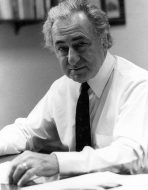
Henry R. Winkler, UC, c. 1978. Image Courtesy Archives & Rare Books Library, University of Cincinnati.
He is remembered as a president who “was the epitome of the learned gentleman,” says Kevin Grace, University Archivist at UC’s Archives and Rare Books Library. “He was a very kind man who deeply cared about UC heritage and its academic mission.”
The greatest of Dr. Winkler’s characteristics “was his community involvement,” Grace continued. “He knew that the university needed to be a public servant to the city of Cincinnati and that was the way he conducted his life as well – serving community organizations in the sincere belief that that was the way we bettered ourselves.” Continue reading
Winkler Center Marks Halloween with Creepy Exhibit of Medical Artifacts
Do you want to attend a Halloween event that promises to give you hauntingly horrific, history nightmares…nightmares that include visions of amputee kits, maggot and leach therapies, pharmaceutical potions from the 1800s and much much more?
Then come visit the Henry R. Winkler Center for the History of the Health Professions on Monday, October 31, 2016 on the R- Level of the Health Sciences Library from 10am to 2pm. On display will be historic documents, photos and artifacts from a variety of the health professions.
We guarantee you will leave the exhibit appreciating the advances made in modern medical treatments, therapies and technology available today. All are welcome. Come if you dare!!!!!!! Bwwaahhhahhhaaaaaa!!!
Heloisa Sabin
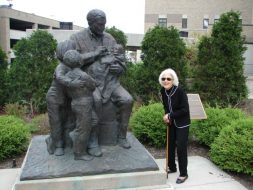
Heloisa Sabin at the Albert B, Sabin memorial at Children’s Hospital, 2010. Courtesy of the Winkler Center for the History of the Health Professions, University of Cincinnati, Cincinnati, Ohio
Heloisa Sabin
1917-2016
The Winkler Center was saddened to hear of the passing recently of Heloisa Sabin. Born, Heloisa Dunshee de Abranches, she married famous medical researcher and developer of the oral polio vaccine, Albert B. Sabin, in 1972.
Before her marriage to Dr. Sabin, she was women’s editor of a family-owned newspaper, Jornal do Brasil, in Rio de Janerio where she worked for 16 years. The Jornal was the largest daily newspaper in Rio at the time. She also studied at Columbia University in New York and held a law degree.
Asked what it was like being the wife of the famous research professor and virologist, “exciting,” she said. “I thought he was fascinating before I met him and I still think he is.” “Life with Dr. Sabin is certainly different from any other kind of life I could lead,” Mrs. Sabin asserted. “We are traveling all the time and I get to meet a lot of people who really enrich my life. Not only do we travel in the United States but we also travel in Europe and other countries where my husband has speaking engagements.” The Sabins not only traveled to numerous locales, but also resided at various times in New York, Washington D.C., Charleston, SC, Switzerland and Israel.
Heloisa became a steward of the Sabin legacy and a tireless activist in later life. Upon Albert Sabin’s death in 1993, she spent a majority of her time speaking out and fundraising to continue her late husband’s work in the study and improvement of immunizations, specifically in regard to Polio. In addition, she became a strong proponent of the use of animals in medical research, as the Polio vaccine her husband developed would not have been so successful had it not been for data gleaned from animal testing. She was a founding member of the Albert Sabin Research Institute, which advocates for global immunization to end all vaccine-preventable diseases.
She visited UC frequently, promoting ways to memorialize her husband’s accomplishments in the place where they occurred. Working with administration of what was then the Cincinnati Medical Heritage Center (now the Winker Center), she saw to it that Albert B. Sabin’s professional and personal papers came here in 1993.
In addition to her meaningful charitable contributions to the University, Mrs. Sabin played a role in the naming of the Children’s Hospital Sabin Center, Albert Sabin Way, and the Hauck Center for the Albert Sabin Archives. She also influenced the development of the Sabin exhibit in the Vontz Center and the Ohio Historical Marker dedicated to Sabin at the Vontz’s entrance.
The Winkler Center will miss Heloisa as will all those whose lives she touched.
If you are interested in researching the Sabin collection at the Winkler Center for the History of the Health Professions, please call 513.558.5120 or email chhp@ucmeil.uc.edu. To view an online inventory of the Albert B. Sabin Papers please visit Winkler-Albert B. Sabin Papers.
Works Used
Hembree, Linda. “Life with Noted Researcher Fascinating.” Spartanburg Herald (Spartanburg, SC). Wednesday, 3 December 1975. P. B3.
Marine, Steve. Correspondence with UC Foundation, Donor Files, Winkler Center for the History of the Health Professions, University of Cincinnati,
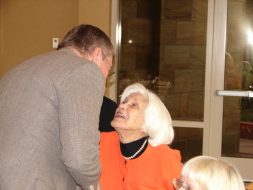
Heloisa Sabin greets visitors at the 50th Anniversary of Sabin Sundays in 2010. Courtesy of the Winkler Center for the History of the Health Professions, University of Cincinnati, Cincinnati, Ohio
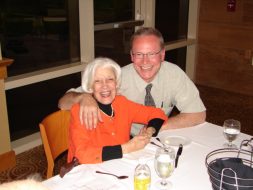
Sabin with Executive Director of the Winkler Center, Steve Marine, at the 50th Anniversary of Sabin Sundays, 2010. Courtesy of the Winkler Center for the History of the Health Professions, University of Cincinnati, Cincinnati, Ohio


